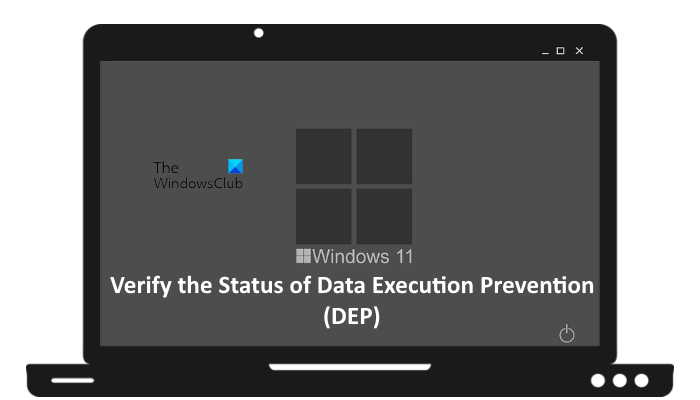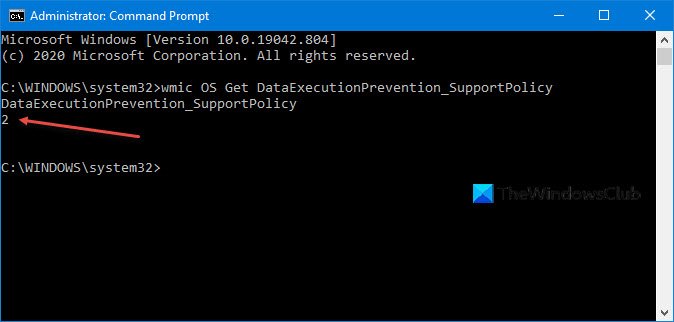Data Execution Prevention, written in abbreviated form as DEP is a security feature that helps you safeguard your system against viruses and other security threats by monitoring your programs to make sure they use the computer’s memory safely. Users need not worry about turning this feature on as it already running and working silently in the background to protect Windows system binaries or programs that “opt-in”. Still. If you want to be sure that the application is running/verify if Data Execution Prevention or DEP in your Windows 11/10/8/7 PC is on or off, here’s the tip.

Here is a tip that tells you how to verify if Data Execution Prevention or DEP in your Windows 11/10/8/7 is on or off.
Verify Status of Data Execution Prevention settings

Open an elevated command prompt and copy-paste the following and hit Enter:
wmic OS Get DataExecutionPrevention_SupportPolicy
The number which is displayed denotes the status of DEP on your machine.
0 – DEP is disabled for all processes.
1 – DEP is enabled for all processes.
2 – DEP is enabled for only Windows system components and services. (Default)
3 – DEP is enabled for all processes.
If DEP is turned on for all programs, it can cause issues with certain programs, in some cases. While it is normally not recommended to turn off DEP for the entire system, you can turn off Data Execution Prevention for a particular program in Windows – but don’t do it for the entire computer, as it may make your Windows less secure.
How do I turn off DEP or Data Execution Prevention?
The Data Execution Prevention (DEP) is enabled by default. If you want to turn it off, you can do so via Windows Security app. Open Windows Security and then select App & browser control. Now, select the System Settings tab on the right side. Click on the Data Execution Prevention (DEP) drop-down and select Off by default.
How does DEP work?
DEP prevents the code from being run from the data pages. If an application tries to run a code from a protected data page, a memory access violation exception occurs. The calling process is terminated if the exception is not handled.